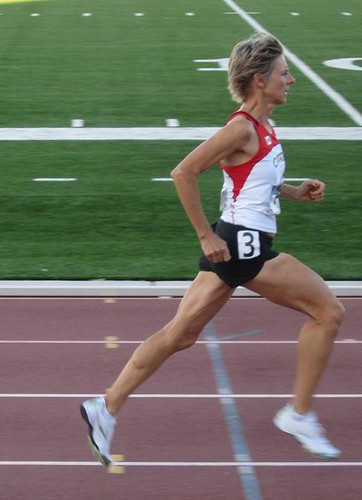 If there was an Olympic event for back surgery, then the United States would be a gold medalist year in and year out. The United States is not only number one in the world in back surgeries performed annually, but it is also number one in the world in failed back surgeries annually. More than 20,000 lumbar spinal fusions are performed annually in this country. There are eight times as many spinal surgical procedures are carried out in the United States per capita as in Britain. Either the United States just coincidentally happens to have a lot of bad backs, or there are a lot of surgeries being performed needlessly.
If there was an Olympic event for back surgery, then the United States would be a gold medalist year in and year out. The United States is not only number one in the world in back surgeries performed annually, but it is also number one in the world in failed back surgeries annually. More than 20,000 lumbar spinal fusions are performed annually in this country. There are eight times as many spinal surgical procedures are carried out in the United States per capita as in Britain. Either the United States just coincidentally happens to have a lot of bad backs, or there are a lot of surgeries being performed needlessly.
There is also a direct relationship between the number of spinal operations performed in any one geographical area and the number of orthopaedic and neurosurgeons in that area. That being the case, the likelihood of you having surgery prescribed for you is related more to the demographics of your locale than it is to "getting the patient better".
Lumbar spinal fusion is costly – from an economic standpoint, and from a societal one as well. This is a consumer issue with some staggering numbers and facts.
 Stop. Take a look around you. Breathe it all in. Reflect on the meaning of it.
Stop. Take a look around you. Breathe it all in. Reflect on the meaning of it.
I think there are times when we don’t do enough of this. It is easy to get distracted by the plethora of “critical” daily issues we face as time just ticks away on us.
Then there are those moments that we all share when we stop and wonder about our place in the cosmos. It will oftentimes creep up on us when we are faced with an event like a birth, a wedding, a graduation, or a death. It could be something that causes us to take stock of our lives, our family, our friends, or our journey. It might even provoke us to ponder our existence or the very essence of our meaning. It might shake the very foundations upon which we build – or have built.
Imagine you only had one day left on the planet – today. What would you do? And if you were writing your own eulogy for tomorrow, how would you want to be remembered? What would they say if you left here today?
 This is the third in a series of RunSmart videos. The series is on-going, with a new video released on a monthly basis. These videos complement the material presented in the book “RunSmart: A Comprehensive Approach To Injury-Free Running”. The full series of videos can be found here. A transcription of the video will also be available with each post.
This is the third in a series of RunSmart videos. The series is on-going, with a new video released on a monthly basis. These videos complement the material presented in the book “RunSmart: A Comprehensive Approach To Injury-Free Running”. The full series of videos can be found here. A transcription of the video will also be available with each post.
For those of you that are interested in a more interactive learning environment, consider attending a four hour RunSmart Level One program. You can further your education with the Level Two and Level Three programs which will focus on the application of RunSmart principles to both coaching and training program development and running injury recovery.
In this video, I will discuss the three keys to running mechanics. There are a number of simple cues that can foster an improvement in your running mechanics.
I hope you enjoy the video series. If you would like me to address any specific aspect of the RunSmart approach, drop me an email or add a comment to this article.
 I guess at first glance, this weekend’s University of Texas football game was a good one. How can you complain about a final score of 43 – 0? A shutout is always a great thing.
I guess at first glance, this weekend’s University of Texas football game was a good one. How can you complain about a final score of 43 – 0? A shutout is always a great thing.
It was a beautiful evening for a game. The temperatures are finally starting to drop a little, and this is the first time all season that I actually had to take a light jacket to the game. College football weather – at least what I would consider college football weather – is upon us.
This week’s victim was Kansas. Rumor has it that they brought a team from Lawrence, Kansas to play the Longhorns. Let’s just say it must have been 3:06 worth of despair for the Jayhawks. There was no Rock, no Chalk, and little Jayhawk. It was a far cry from the KU basketball team who, by the way, might have scored as many points as the football team if not a few more. And they only start 5 players.
 This past week, I gave a 3 hour presentation at the Texas Physical Therapy Association’s Annual Conference – my third consecutive appearance at our annual meeting. The presentation was entitled “Mechanisms Of Therapeutic Exercise Progression”.
This past week, I gave a 3 hour presentation at the Texas Physical Therapy Association’s Annual Conference – my third consecutive appearance at our annual meeting. The presentation was entitled “Mechanisms Of Therapeutic Exercise Progression”.
Exercise – and the parameters required to optimize the responses to it – is a large part of my daily world. Whether it is a program for injury recovery, injury prevention, or performance optimization, the parameters and dosage of exercise are critical. They are intimately related to whether or not we “turn on the gene” – or don’t.
The problem is that the application of therapeutic exercise, in my humble opinion, is a little behind the curve relative to what we actually know takes place at the cellular level. I see this problem with personal trainers, physical therapists, physical therapist assistants, chiropractors, and even physicians.
Apparently it is a topic that the physical therapy community in Texas is interested in. My session was very well-attended, with over 55 participants in a standing-room-only meeting room.
 It is quite amazing how when you decide to run for President, all of your past political successes and failures are scrutinized in the public spotlight. Texas Governor Rick Perry has come under scrutiny – thankfully, I might add – for his health care policies in the state of Texas.
It is quite amazing how when you decide to run for President, all of your past political successes and failures are scrutinized in the public spotlight. Texas Governor Rick Perry has come under scrutiny – thankfully, I might add – for his health care policies in the state of Texas.
Governor Perry has been very vocal about his 2003 tort reform and the effect it has had on physician recruitment in Texas. But I think that the only doctor that would approve of this statement might be a spin doctor.
Has Governor Perry’s tort reform in Texas changed the health care playing field? Or has his health care agenda been a miserable failure in more ways than one? Does any of this bode well for his role in national health care reform should he become President?
 A day late and a dollar short. It seems like that is how my writing schedule has gone this past week. With a conference presentation on my platter, and a freelance article for National Masters News on deadline, my normal publication schedule went askew. There is no better time than now to get back in the zone.
A day late and a dollar short. It seems like that is how my writing schedule has gone this past week. With a conference presentation on my platter, and a freelance article for National Masters News on deadline, my normal publication schedule went askew. There is no better time than now to get back in the zone.
This episode of the Rhubarb Report looks at intelligence, testing, and the scholar athlete. Sit down, relax, and enjoy some fresh Rhubarb!
 "Running Injuries: Etiology And Recovery- Based Treatment" (co-author Bridget Clark, PT) appears in the third edition and fourth editions of "Clinical Orthopaedic Rehabilitation: A Team Approach" by Charles Giangarra, MD and Robert C. Manske, PT.
"Running Injuries: Etiology And Recovery- Based Treatment" (co-author Bridget Clark, PT) appears in the third edition and fourth editions of "Clinical Orthopaedic Rehabilitation: A Team Approach" by Charles Giangarra, MD and Robert C. Manske, PT.
 Allan Besselink, PT, DPT, Ph.D., Dip.MDT has a unique voice in the world of sports, education, and health care. Read more about Allan here.
Allan Besselink, PT, DPT, Ph.D., Dip.MDT has a unique voice in the world of sports, education, and health care. Read more about Allan here.
 Top 5 finalist in three categories: "Best Overall Blog", "Best PT Blog" and "Best Advocacy Blog".
Top 5 finalist in three categories: "Best Overall Blog", "Best PT Blog" and "Best Advocacy Blog".